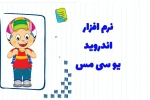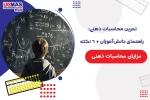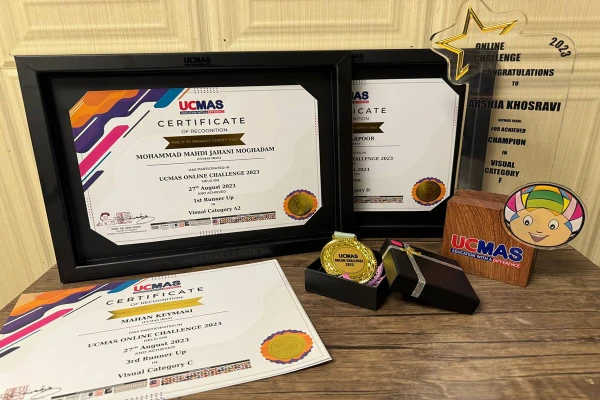What is the Schoty Abacus? | The Russian Abacus and Its Uses

Have you ever wondered how people performed complex calculations before the invention of digital calculators? One fascinating and efficient tool for this purpose is the Russian abacus, or "Schoty." In this article, we will explore the structure, components, and uses of the Russian abacus and learn how to work with it.
What is the Russian Abacus?
The Russian abacus, known as "Schoty" (счёты), is a traditional tool for performing mathematical calculations. It is one of the oldest computational tools developed in Russia. The design of this abacus allows users to perform both simple and complex calculations. Unlike Chinese and Japanese abacuses, which are widely used across Asia, the Russian abacus has a unique design and method of use.
This abacus enables merchants, teachers, and even children to perform calculations without requiring advanced mathematical knowledge. Its simple and efficient design allowed it to remain in use in accounting offices and shops until the 20th century. As a result, many people in Russia are familiar with this tool, and it is still used in modern times for teaching mathematics.
History of the Russian Abacus
The abacus has existed in various forms across different cultures, but the Russian version dates back to the 17th century. At that time, it was used for calculating taxes, recording trade transactions, and even counting agricultural production. Over time, and with technological advancements, the Russian abacus remained popular due to its simplicity.
During the Soviet era, the abacus was widely used by accountants and shopkeepers. Even until the 1990s, you could find people in many Russian stores and local markets performing calculations with this tool.
Components and Structure of the Russian Abacus
The Russian abacus consists of a rectangular wooden frame with several horizontal rods. Each rod holds ten beads that can move left and right. Unlike Chinese abacuses, which have two sections, all the beads on the Russian abacus are aligned in a single row. This simple design makes it easy to learn and use.
Main Components of the Schoty (Russian Abacus)
- Wooden Frame: A sturdy and lightweight wooden frame forms the abacus's main structure, holding the beads and rods.
- Horizontal Rods: The rods, typically made of metal or wood, hold the beads and allow them to move.
- Beads: Small spherical beads, usually made of wood or plastic, represent numerical values.
- Separator Rod (in some models): A rod that separates smaller units like fractions from other numerical values.
How to Use the Russian Abacus
To use the Russian abacus, you first need to understand how numbers are represented. Each rod represents a numerical place value: the first rod for units, the second for tens, the third for hundreds, and so on. To represent numbers, you move the beads from right to left.
Representing Numbers on the Russian Abacus
For example:
- To represent the number 453:
- Move 4 beads on the hundreds rod to the left.
- Move 5 beads on the tens rod to the left.
- Move 3 beads on the units rod to the left.
Performing Addition on the Russian Abacus
To add two numbers, simply move the corresponding beads for each number on the respective rods. For example:
- First number: 234
- Second number: 567
Move the beads for each rod and, if necessary, carry over to the next place value.
Performing Subtraction on the Russian Abacus
For subtraction, move the beads of the smaller number away from the position of the larger number. This process is similar to addition but in reverse, where beads are moved back to their original position.
Multiplication and Division on the Russian Abacus
Multiplication and division are more complex on the Russian abacus and require practice. These operations are typically performed using a combination of bead movements and mental calculations.
Applications of the Russian Abacus
Historically, the Russian abacus was used in shops, markets, and accounting offices for fast and accurate calculations. Even after the advent of mechanical calculators, this tool remained popular for its simplicity and efficiency. Today, the Russian abacus is used as an educational tool in schools to enhance mathematical skills and better understand numerical concepts.
Advantages of Using the Russian Abacus
- Speed and Accuracy: With practice, calculations can be performed quickly and accurately.
- Improved Mental Skills: Regular use of the abacus can enhance memory and mental calculation abilities.
- Ease of Learning: The simple structure of the Russian abacus makes it easy for beginners to learn and use.
Comparison Between the Russian Abacus and Other Abacuses
Compared to Chinese (Suanpan) and Japanese (Soroban) abacuses, the Russian abacus has a different design. While Asian abacuses have two sections with different bead arrangements, the Russian abacus has a single section with ten beads per rod. These differences result in varying methods of calculation.
Interesting Facts About the Russian Abacus
- Design Based on Human Hands: Each row with ten beads represents ten human fingers, making its use more intuitive.
- Modern Usage: Despite technological advancements, the Russian abacus was still used in some stores and markets until the 1990s.
Conclusion
The Russian abacus is a simple yet efficient tool that has maintained its place throughout history. Although technology has provided modern tools, the abacus remains a valuable educational and historical device. Whether for better understanding mathematics or enjoying the history of calculations, trying this tool is definitely worthwhile.
Frequently Asked Questions
- What differentiates the Russian abacus from the Chinese abacus?
- The Russian abacus has a single section with ten beads per rod, whereas the Chinese abacus has two sections with different numbers of beads.
- Is the Russian abacus still used today?
- Yes, it is currently used as an educational tool in schools to enhance mathematical skills.
- How can I learn to use the Russian abacus?
- There are numerous online resources and books available for learning the Russian abacus.
- Is the Russian abacus only suitable for simple calculations?
- No, with practice, it can also be used for more complex operations like multiplication and division.
- Why is it called the Russian abacus?
- The name "Schoty" in Russian means "counting," which is why this abacus is known by that name.

 The Android UCMAS application (UCMAS Game App) + Features
The Android UCMAS application (UCMAS Game App) + Features
 What is Abacus? History, Types & Modern uses | UCMAS
What is Abacus? History, Types & Modern uses | UCMAS
 Mental Arithmetic Tests
Mental Arithmetic Tests
 Mental Arithmetic Practice
Mental Arithmetic Practice
 How to Solve Different Radicals with Various Indices on a Calculator
How to Solve Different Radicals with Various Indices on a Calculator






There are no comments yet!
Leave a comment